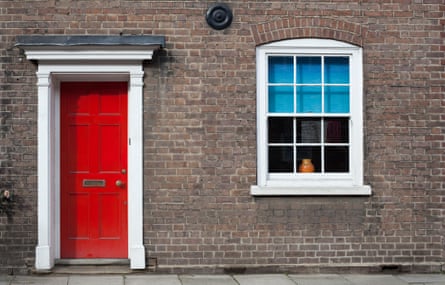
This week’s decision by the Bank of England to hold the base rate at 5.25% after 14 back-to-back rises has left borrowers sighing with relief. It was a close-run thing, with almost half of the monetary policy committee voting for a further increase, and it is not clear if it heralds an end to these or only a pause. Many experts, however, think rates are now at or near their peak.
If you are about to take on a new mortgage, the outlook for interest rates will be a factor in your decision, as well as your capacity to cope if they don’t go in the direction the financial world expects.
Tracker v fixed
For several years now, most borrowers have taken out fixed-rate mortgages – they have tended to be cheaper in the short-term than base rate tracker deals, and come without any risk that monthly payments will increase. Now, however, trackers are attracting a bit of attention. These mortgages are pegged to the Bank’s base rate and follow its movements, so when it goes up, you know your monthly costs will increase, but when it goes down, your payments will decrease.
According to the financial data firm Moneyfacts, the average two-year tracker rate was 6.17% on Thursday – but there are cheaper deals on the market.
David Hollingworth at the broker L&C Mortgages points to home loans from Nationwide building society and HSBC, which are priced at the base rate plus 0.14 percentage points (at the time of writing). That means they are cheaper than two-year fixed-rate mortgages, and there is scope for your monthly payments to go down.
 View image in fullscreenTracker mortgages are attracting more attention. Photograph: Andrew Paterson/Alamy
View image in fullscreenTracker mortgages are attracting more attention. Photograph: Andrew Paterson/Alamy
They also come without early redemption charges, so you can switch to a fixed rate later if you change your mind. The Nationwide deal is for buyers and people remortgaging, while HSBC’s is a remortgage-only product.
Five-year v two-year fix
For quite a few weeks, data from Moneyfacts has shown a sizeable margin between the average rates on these deals. On Thursday, the average new two-year fixed rate stood at 6.58%, while the average five-year fixed rate was 6.07%.
The rates on offer vary between lenders, and some are much lower than those averages. After the base rate announcement Nationwide, the UK’s biggest building society, cut its cheapest two-year fixed rate to 5.44% and its equivalent five-year deal to 4.94%.
So while in the past, borrowers have typically been given the choice of a low rate in the short-term or a higher rate in exchange for longer-term security, it is now cheaper to fix for longer. However, brokers say borrowers are tending to go for two-year deals, despite having to pay more each month and facing fees when the time comes to remortgage.
“Of the fixed-rate mortgages we’re seeing people take out, the lion’s share are two-year deals now,” Hollingworth says. “Five-year mortgages afford greater certainty but people are worried that if rates go down, they will be left high and dry.”
If you believe that the state of the UK economy means the base rate will have to start coming down fairly soon, and fairly sharply, you may not want to commit to paying a rate that is around its current level.
When weighing up the cost of locking in, it is worth considering how far rates will have to move in order for a two-year mortgage to be a better bet than a five-year deal.
With those Nationwide deals, a £250,000 mortgage will cost you about £100 more each month if you take the two-year deal, and you will face a £999 product fee when you come to remortgage. Gareth Lowman, a director at SPF Private Clients, says that the five-year deal costs £62,749 in interest and fees over the period. To match that, if you start with the two-year deal you will need to move on to a rate of 4.47%.
Making the choice
 View image in fullscreenMortgage brokers say borrowers are tending to go for two-year deals. Photograph: fotoshoota/Getty Images/iStockphoto
View image in fullscreenMortgage brokers say borrowers are tending to go for two-year deals. Photograph: fotoshoota/Getty Images/iStockphoto
“I’ve noticed a common trend among those whose mortgage payments are really stretching their monthly budget: they are much more likely to opt for fixed rates, and for longer – five years rather than two,” says Alex Morris, a mortgage broker at Clifton Private Finance.
“On the other hand, those with extra cash to spare each month are more likely to hedge their bets on a tracker or shorter-term fixed rate because they have less to lose if they get it wrong.”
Knowing how much you are going to pay for five years – even if you think it may be over the odds at times – has a value for some borrowers.
“Locking in for five years removes the gamble that those going for two-year deals are taking,” Hollingworth says. “Two years comes around pretty quickly, and there’s no certainty that rates will be any lower than they are today.”
‘I went for a two-year fix’
Amy took out a mortgage in the summer to buy her first home. She wanted some stability, so she opted for a fixed rate over a tracker but she did not want a five-year deal.
I don’t expect rates to climb and climb over the next two yearsAmy
“I went for the two-year fix in the end as, while this was a higher rate, I felt it would be much more risky to fix for the long term,” she says.
“I don’t expect rates to climb and climb over the next two years, so in the worst case I shouldn’t be much worse off having chosen the shorter term.”
In her mid-20s now, she says she could be earning more by the time it comes to remortgage but “I’m not relying on this, as I’ve had a couple of years of real-terms cuts”.
